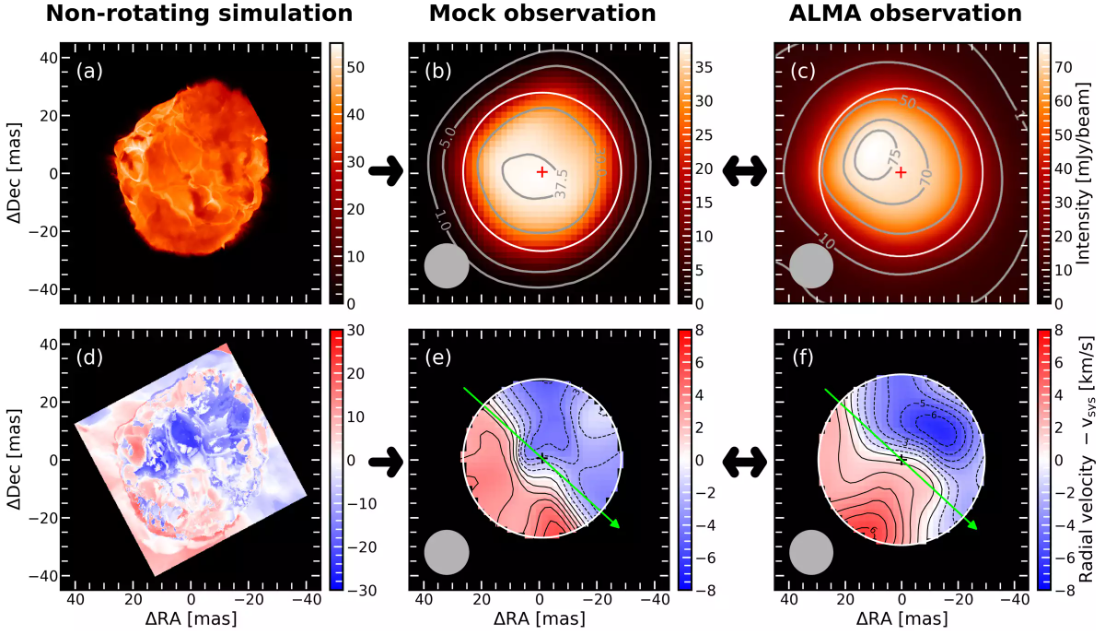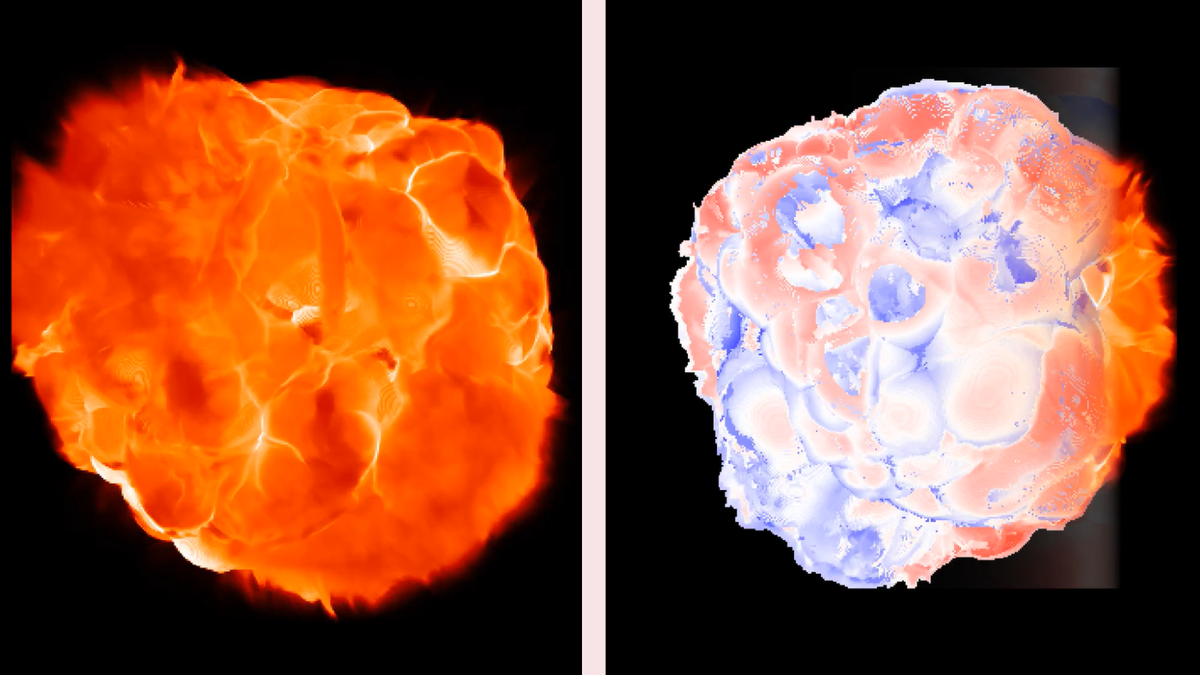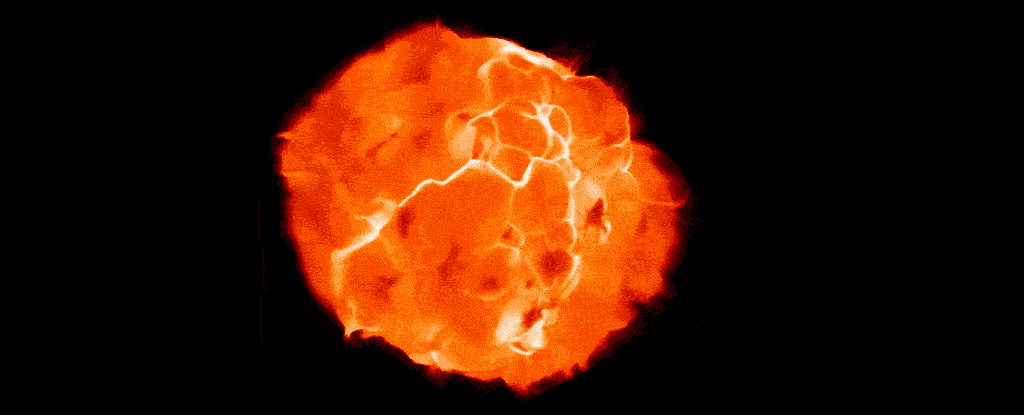
Betelgeuse, a red supergiant star located in the constellation Orion, is currently experiencing another Great Dimming Event. This event has caused Betelgeuse to dip nearly half a magnitude since late January and it is now the faintest it has been in two years. The Atacama Large Millimeter/submillimeter Array (ALMA) captured an image of the red supergiant star, which shows that one of its unique features is its boiling surface. This boiling surface may be why Betelgeuse looks like it is rotating in observations and recent studies suggest that it is spinning much faster than a star its size should be able to. However, new research from the Max Planck Institute for Astrophysics suggests that data supporting Betelgeuse's rotational speed could be tracking its convection movement rather than its true rotational speed.








